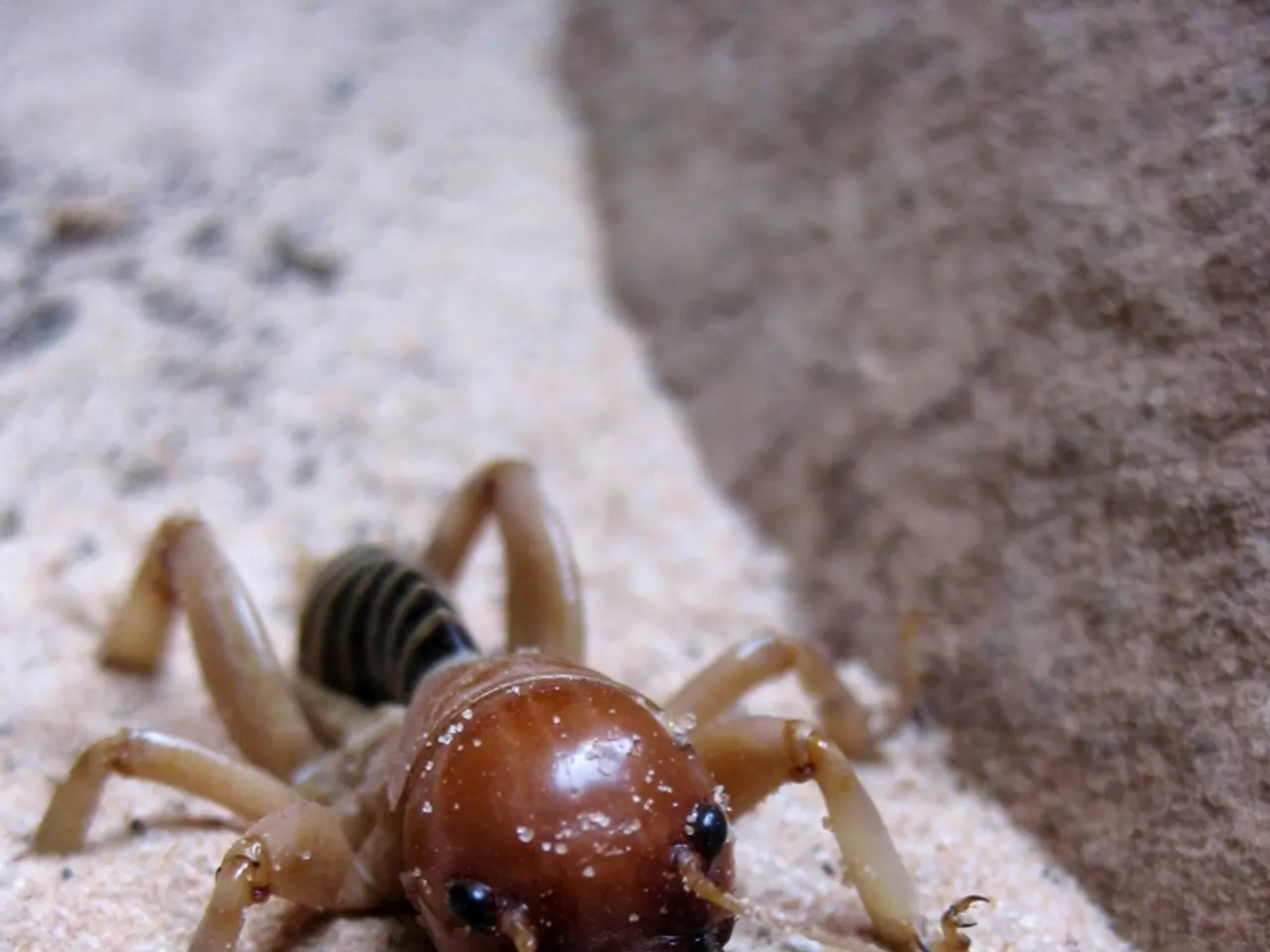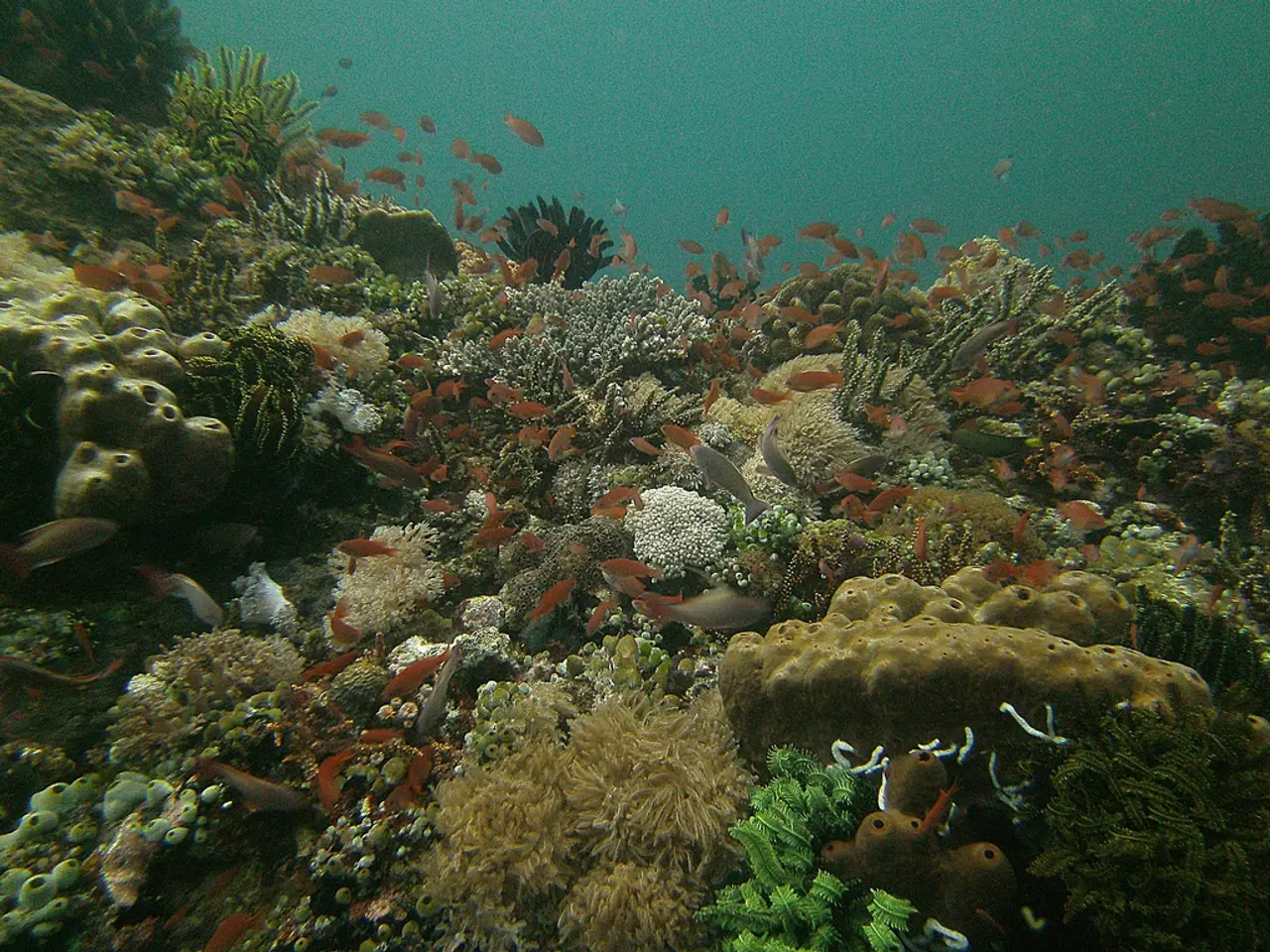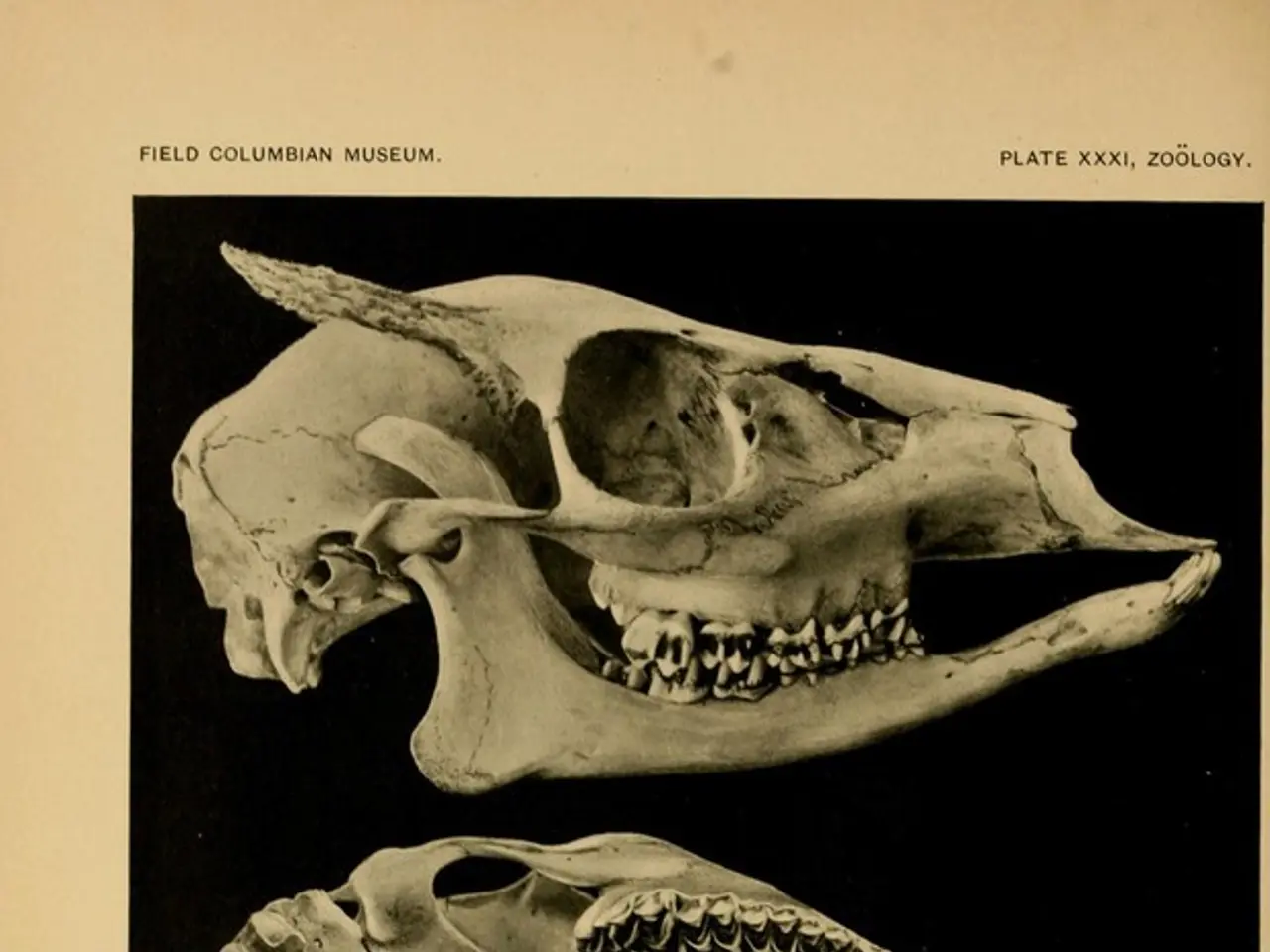Unusual Habitat of Caddisfly Larvae, Constructing Dwellings Out of Sand and Shells
In the hidden workshops of freshwater ecosystems, a world of creativity and innovation unfolds. These workshops are inhabited by the humble caddisfly larvae, aquatic creatures that exhibit extraordinary construction skills.
Caddisfly larvae are masters of adaptation, using materials found in their environment and silk produced from a gland near their mouth to construct portable cases. These cases serve as protection during their vulnerable pupal stage, anchoring them to substrates like rocks and plants, and camouflaging them from predators in the dynamic environments of streams and rivers.
The materials used for case construction vary depending on the habitat and species. Caddisfly larvae can be found using small rocks, sand grains, plant debris, and other natural fragments to build their cases. The silk, produced as a sticky and strong adhesive, binds these materials together, creating unique, camouflaged cases that match the color and texture of their streambed.
The adaptability of caddisfly larvae extends beyond their construction abilities. Some species alter their case composition depending on the season or the presence of certain predators. This flexibility in problem-solving is a testament to their resourcefulness and adaptability.
Caddisfly larvae play crucial roles in freshwater ecosystems. As shredders, they contribute to breaking down leaf litter, playing vital ecological roles in nutrient cycling and food webs. Their cases provide shelter that reduces predation risk while allowing the larvae to feed effectively. Some species even construct nets or retreats for filter feeding.
The world of caddisfly larvae serves as a source of inspiration for awe and innovation. Their architectural styles, ranging from simple to complex, have resulted in a diverse range of case shapes and designs. These intricate structures have caught the attention of artists and jewelers, who have used caddisfly cases to create breathtaking, unique pieces of wearable art.
Moreover, the properties of caddisfly silk have potential uses in medicine and construction due to its sticky and strong properties.
Caddisfly larvae are crucial indicators of aquatic ecosystem health. The presence (or absence) of caddisfly larvae can reveal a lot about the condition of a stream or pond. A thriving caddisfly community suggests clean, oxygen-rich water, while a decline can signal problems like pollution, habitat loss, or climate change. As such, caddisfly larvae are used by scientists and engineers to monitor environmental impacts and restoration efforts.
In essence, the world of caddisfly larvae is a microcosm of resilience, creativity, and adaptation. These tiny engineers continue to captivate and inspire us with their unique construction skills and contributions to freshwater ecosystems.
[1]: Source for further reading [5]: Additional source for detailed information
- The innovation and resilience displayed by caddisfly larvae in their construction of protective cases, using materials from their environment and silk, is a fascinating example of adaptation in the face of climate change and environmental challenges.
- The adaptability of caddisfly larvae, as evidenced by their varying case compositions based on season and predator presence, demonstrates the potential for resourcefulness and problem-solving in wildlife and plants, as well as in environmental-science and lifestyle choices.
- The unique, intricate cases constructed by caddisfly larvae have captured the attention of artists and jewelers, leading to the creation of breathtaking, one-of-a-kind pieces in the realm of education-and-self-development and design.
- The strong and sticky properties of caddisfly silk could have significant implications for medicine and construction, offering potential solutions for bindings or adhesives in scientific advancements.
- The presence (or absence) of caddisfly larvae in freshwater ecosystems provides valuable insights into the health of the environment, serving as vital indicators of water quality, habitat conditions, and responses to climate change or pollution.




